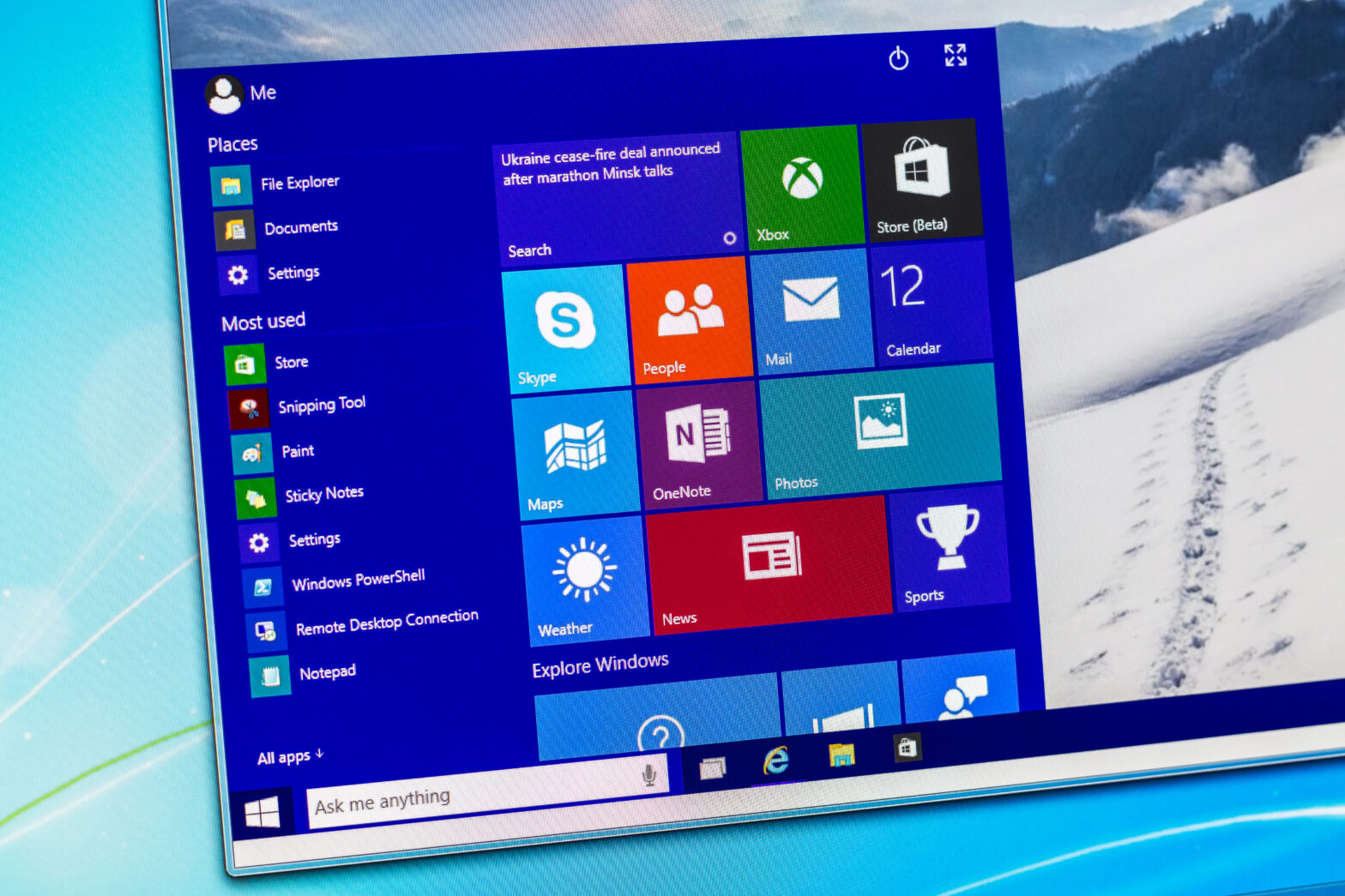If you use Windows for business – and let’s face, it most of us do – you may be confused over whether the free upgrade to Windows 10 is free to you. It has been the subject of many blogs over the past couple of months but wading through them I am not convinced it is any clearer.
What I can tell you is the upgrade is free to consumers and businesses. However for businesses you pay for the extras which those of us running a company may well decide we can’t do without, eg Microsoft’s Enterprise Cloud Suite (ECS). This combines Office 365, a Windows licence per user and the Enterprise Mobility Suite which looks after security on all devices including mobiles.
Don’t fret. Giving it away free is all in the Microsoft business plan. This is the company which made £60 billion last year.
So now we can relax about Microsoft’s profits, the next question is what is new/different about Windows 10 and is it worth the wait?
I went to an Expo earlier this year where Windows 10 was being showcased. It felt a bit like going back in time because looks wise it is similar to Windows 7. I know a lot of people who complained bitterly when Windows 8 came in because it seemed to be all about the apps icons/tiles. The start bar had gone – shock horror. For many they missed the old interface of Windows 7 with the start bar.
However if you still don’t like the setup of Windows 8 then the upgrade to Windows 10 may well answer some of your prayers in terms of looks. But what is new?
It is faster to log in and speed is important. How annoying is it when you come into the office, turn on your computer and it takes a while to start up. OK, ‘a while’ is subjective. But when you are in a hurry you want the computer on NOW! The client is on the phone wanting the answers NOW and you have just walked in bleary-eyed on a Monday morning and need a fast start-up.
Windows 10 gives users the choice of anything and everything to log in as an alternative to passwords; from fingerprints to iris and facial recognition. You may have seen the adverts for Windows 10 and the smile technology, although it is unclear whether this is strictly for home users. I’m not completely convinced how practical it will be. Asking staff for their finger prints, or smile, may not go down too well with those who have strong feelings on civil liberties!
It is true though that, despite the warnings, many people are not as vigilant about their passwords as they need to be. For your business this smile technology could work well; at least better than staff who think pword2015 is the most efficient way of keeping your information secure. Of course it could be nothing more than a gimmick, but at least it is trying to remain one step ahead of the hackers and keep your business safe.
We’re told that Windows 10 is going to be the last Windows OS (Operating System). From now on you can upgrade autonomously and the newest tech innovation of apps is replacing more intensive style of applications. This makes Windows 10 very mobile friendly and that is where it is heading. A completely mobile and accessible network and application, with so many of us working remotely, will be very helpful.
It may not be long before Microsoft can wipe away the need for physical PCs altogether. Microsoft’s ‘Continuum’ plans to have people working on mobile phones remotely and then when they come into work. They can then project their mobile onto their screen (of course screens needs to be Wi-Fi enabled). This way people don’t need computers. More recently Microsoft has been releasing full versions of Word and Excel for the mobile phone, and it is impressive. The only drawback is the size of your screen.
The other new ideas from Microsoft include Microsoft Edge, which is another internet Browser to compete with Google Chrome. Let’s see if it is more popular than Internet Explorer – and that won’t be hard!
So are there any downsides with Windows 10? You only have to Google ‘Microsoft Edge Windows 10 and downsides’ and you can spend a day in the blogsphere reading gripes about the new system. It is a new and unpredictable platform. However to be fair most new systems have some bugs to start with. Time and technology never stand still. And let’s face it, facial, iris and fingerprint recognition are far more fun than remembering your password. What’s not to like?
Andy Hinxman is founder of Keybridge IT Solutions.




